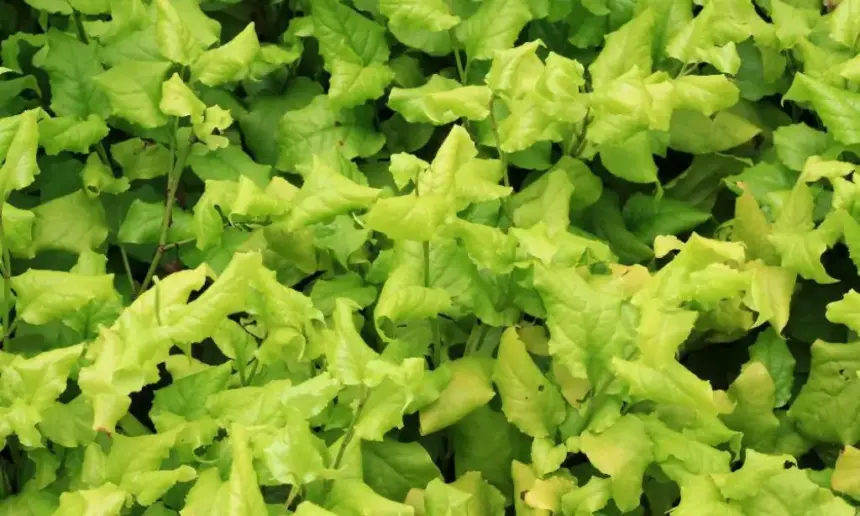Plumbago Not Blooming? (3 Reasons+Solutions)
Plumbago is one of the most popular plants when it comes to gardening and landscaping and it’s easy to understand why.
When in bloom, plumbago and its wonderful white and blue flowers are a beautiful sight and a fantastic addition to any environment.
Even the dullest space can become more lively and vibrant with plumbago.
Because of all this, there’s hardly anything more frustrating for a gardener or a homeowner as when their plumbago is not blooming.
Although plumbago is a rather hardy plant and capable of growing in different environments, in certain conditions, it just won’t produce any flowers, significantly lessening its appeal as an ornamental plant.
There can be several potential reasons for plumbago not blooming and I’ll explain each of them below.
I’ll also go into detail about the best possible solutions for these issues and share advice on how to get your plumbago blooming again.
So, let’s dive in!
Table of Contents
Why is my Plumbago Not Blooming?

As I already explained, if your plumbago is not blooming it can be due to several different causes.
These reasons mostly have to do with the environment plumbago grows in and with the way you care for it.
The good news is that even if the plumbago is not producing flowers, it doesn’t mean that it has permanently lost that ability.
Therefore, it’s important to learn how to identify what causes these issues and how to handle them to make your plumbago bloom again.
Only then, you’ll be able to provide your plumbago with perfect conditions to thrive and produce its gorgeous flowers.
This shouldn’t take much of your time, nor it requires a particular effort but will go a long way in making your living space more enjoyable.
Not Enough Nutrients
To produce flowers, every blooming plant needs to receive a sufficient amount of nutrients and plumbago has a particularly high demand.
The lack of nutrients is probably the most typical reason why your plumbago isn’t blooming.
This often happens when you have recently changed the soil type in which the plumbago is planted or changed the plant’s location and the new soil doesn’t have the same make as the previous one.
This means that it may not have all the nutrients, but also that it may have a different, thicker and harder, structure making it harder for the plant to absorb what it needs.
If you’re unsure whether this really is the reason that caused your plumbago to stop blooming, you can check for other common symptoms of the lack of nutrients.
The most obvious sign is the degradation of the leaves which turn yellow and become wilted and droopy.
What to Do?
[amazon box=”B01MF77OID”]
If your plumbago suffers from a lack of nutrients, it means that the soil is not rich enough in them and that you’ll have to add [amazon link=”B01MF77OID” title=”fertilizer” link_icon=”amazon” /].
In most cases, it’s recommended that you use fertilizer rich in phosphorus and potassium as these ingredients provide strength to the roots and allow them to absorb the nutrients necessary to support flower growth.
Of course, when using the fertilizer, closely follow the instruction so you don’t overfertilize the soil as that may cause root burn.
During the growing season, you can add fertilizer once every 2-4 weeks.
You can also make your own DIY fertilizer and use compost or manure. Compost is a great solution, as it’s easy to produce and use.
Simply combine compostable items such as leftover vegetables or peels with lawn clippings and let them sit in a container for about a week.
Overwatering
Plumbago may also fail to bloom because the soil it’s planted in is too damp and wet.
Overwatering is a common problem when caring for plants, and plumbago is particularly sensitive to it.
When the soil becomes waterlogged, it can easily cause root rot and impede the entire plant’s ability to grow and develop.
Because of this, the roots are unable to absorb enough nutrients and water from the soil, which may cause plumbago to stop blooming due to undernourishment.
What to Do?
[amazon box=”B0BJCLY3YL”]
If you believe that your plumbago isn’t blooming due to too much water in the soil, stop watering it for a while and give the soil a week or two to dry out.
After that period, make sure to only water the plumbago when the top level of the soil, an inch or two thick, is dry.
You can easily check this with your finger or use a [amazon link=”B0BJCLY3YL” title=”moisture meter” link_icon=”amazon” /]. If the topsoil is still moist, there’s no need to add more water.
You can also deal with this situation by improving the soil drainage, which is easiest done by relocating the plant to a new pot with better water-draining properties.
When repotting the plumbago, make sure to cut off any parts of the root that may be rotten.
You can recognize root rot as the damaged areas will be brown, while the color of a healthy root will be white.
Lack of Light and Cold Weather
Plumbago thrives when in sunny and warm conditions.
On the other hand, when the weather is cold and/or rainy, the plant will be stressed and one of the most common manifestations of this is that plumbago won’t bloom.
The optimal growing conditions for plumbago are when the outside temperature is in the 60-80 degrees Fahrenheit range.
This plant also enjoys sunlight and will develop the best when fully and directly exposed to the sun.
Therefore, just placing it on the windowsill likely won’t be enough. If you have to keep it inside look for a spot next to a south or west-facing window.
Look to provide it with at least 6 hours of direct sunlight per day.
In case the plumbago doesn’t get enough sunlight, it will probably start to lose its foliage and won’t produce flowers.
What to Do?
To be able to provide it with the best possible conditions to thrive, you have to carefully plan and track plumbago potting.
The right time to plant it outside is when the temperature reaches around 65 degrees Fahrenheit and stays at that level for at least a couple of days.
Once the season of the year when temperatures are below 60 degrees comes, it’s time to relocate your plumbago indoors.
I already explained how to pick a place for plumbago inside the house, but if it’s still not getting enough light, you may want to think about getting artificial lighting and keep the plant under the fluorescent bulbs for prolonged periods during the day.
Plus, as plumbago also doesn’t like dry air, you can try using humidifiers when indoors.
Conclusion
As those who grow plumbago most likely do it for its visual appeal and to spruce up their garden yard, the situations when the plant doesn’t produce flowers can be extremely annoying.
However, as frustrating as this may be, there’s probably an easy solution for your trouble
The common causes of plumbago failing to bloom are lack of nutrients, bad lighting and cold weather, and overwatering.
All of these have pretty easy solutions and, with some effort, you can have your plumbago blooming again sooner rather than later.
The important thing is to look closely for signs indicating these problems, so you can take necessary actions to fix them.




